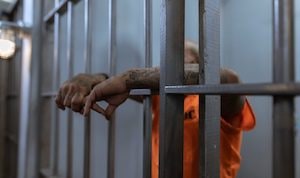Since 1993
Fingerprint Evidence Not Always Accurate

“All knowledge degenerates into probability.” David Hume
Ok, I’m not the biggest “Hume” fan, but I love the above quote. After defending over 60 jury trials in Orlando, I’ve seen more than my fair share of prosecutors presenting scientific evidence as “fact”, when it’s really just probabilities. In a DUI case, for example, the state presents the “fact” that my client’s BAL was above a .08, but such a number has numerous “probabilities” built in. In other cases, a lab analyst presents to the jury the “fact” that the substance found in the defendant’s pocket was cocaine, or that the DNA found at the scene matches my client’s DNA. And so on and so on.
The “science” of fingerprints is a great example of how prosecutors present evidence as “fact”, when it’s only probability evidence. Such fingerprint evidence is common in burglary charges, rape charges, and possession of a firearm by a convicted felon charges, and is introduced to show a defendant’s physical presence at a crime scene, or proof of a prior felony conviction. It seems that everyone believes that no two fingerprints are alike, but is this really so? A few years ago, a man from Seattle was accused of a terrorist act in Madrid (Spain) because his fingerprints matched those found on the explosive device–yet later it was determined that the fingerprint “match” was not him–even though the fingerprints matched his prints! How can two different people have the same fingerprint?
The fact is, we don’t really know if two people can have the same fingerprint, because a large scale study has never been done regarding this issue. Fingerprint matching is based upon probability theory. Scientists examine how something behaves (the sun rises every morning in the east), and predict that it will (probably) rise that same way again tomorrow. If an event is repeated enough, surely it will simply continue to repeat, right? That’s the basis of much of our faith in science. We estimate the probability of a DNA match, or a fingerprint match–though juries can mistakenly take this evidence as “fact”. By the time a criminal defense attorney finishes his/her cross-examination of the State’s latent examiner, hopefully the jury will understand just how flimsy these probability sciences can be.
There are several studies out there dealing with the accuracy of fingerprint analysis. Some small studies have found hundreds of repeat fingerprints–in other words–hundreds of people with the same fingerprint “matches”. So, if these fingerprints are found at a crime scene, it could be any number of different people who committed the crime (but I doubt the State’s fingerprint examiner would ever admit to such…). Hum….
Fingerprint analysis doesn’t compare the prints per se, it compares a sample of a fingerprint’s features–the ridges and loops found in a prints arches, deltas, and whorls. The fingerprint analyst will use a magnifying glass (or Photoshop scan) to review the prints, looking for identifying characteristics like ridge endings that point upwards or downwards (for example). Once several of these points have been identified, the print is compared against a second print to see if these characteristics match. Again, such evidence is presented by prosecutors as “fact”, but it’s really just an opinion that two prints match because six or seven of these “features” are similar in each print sample. It’s an opinion based upon the probability that these print characteristics match another human beings prints. No one really knows how many humans have those characteristic features on their prints, because no such studies have been done.
A recent study of fingerprint analysis came to the following conclusions: “The accuracy of decisions made by latent print examiners has not been ascertained in a large-scale study, despite over one hundred years of forensic use of fingerprints…Recently, there has been increased scrutiny of the discipline resulting from publicized errors and a series of court admissibility challenges to the scientific basis of fingerprint evidence. In response to the mis-identification of a latent print in the 2004 Madrid bombing, a Federal Bureau of Investigation Laboratory review committee evaluated the scientific basis of friction ridge examination.” (from “Accuracy and reliability of forensic latent fingerprint decisions” Ulery, Hicklin, Buscaglia, and Roberts, PNAS.org, April 2011).
To quote our friends from Public Enemy, “don’t believe the hype.”








